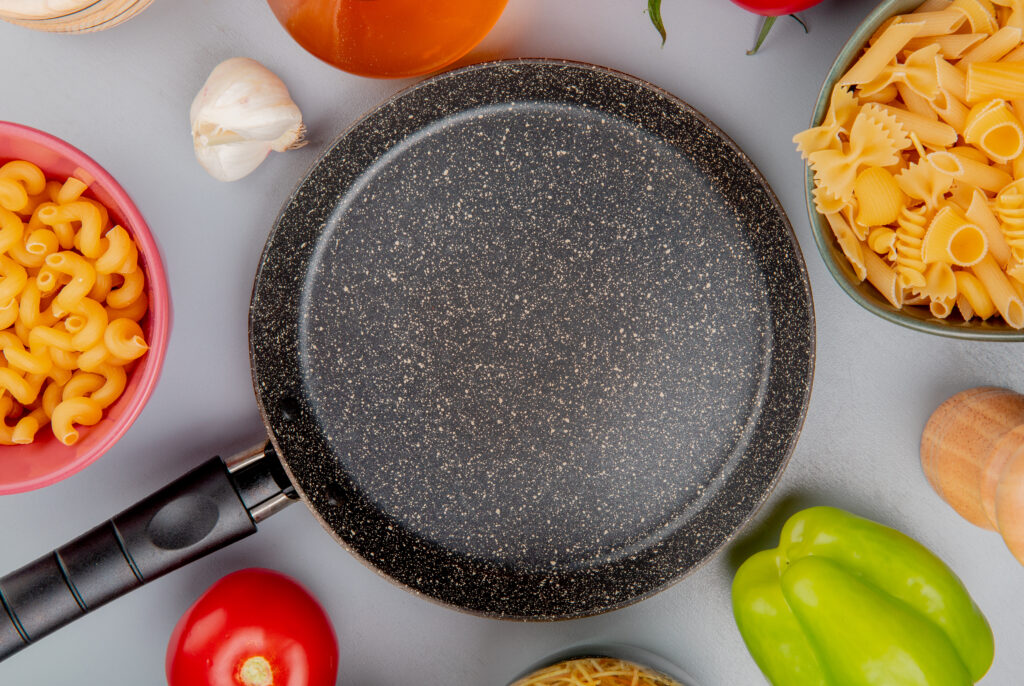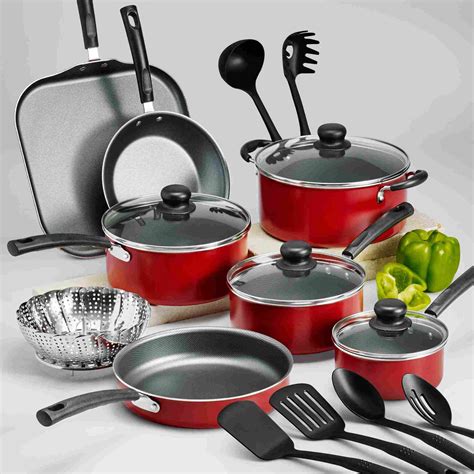Nonstick cookware set is a must-have in many kitchens today because it makes cooking and cleaning much easier and faster. Whether you’re a beginner or an experienced cook, choosing the right nonstick cookware set can save you time, reduce hassle, and help you prepare delicious meals with ease.
With so many options available, picking the best nonstick cookware set might feel confusing. But don’t worry — this easy guide shares 7 simple tips to help you select the perfect set that fits your cooking style, kitchen needs, and budget.
Using a good nonstick cookware set allows you to cook healthier meals with less oil and prevents food from sticking to the pan. Plus, cleaning up becomes quick and stress-free, so you can spend more time enjoying your food and less time washing dishes.

1. Know the Type of Nonstick Coating
Not all nonstick cookware is made the same. The two most popular types of nonstick coatings are:
PTFE (also called Teflon), which gives a very smooth surface that makes cooking and cleaning easy. Just be careful not to use metal utensils on it, as they can scratch and damage the coating.
Ceramic coating, which is free from harmful chemicals like PTFE and PFOA. It’s a greener choice and can handle higher heat, but it might wear out faster if used often.
When picking a nonstick cookware set, think about what’s safest for you, how long you want it to last, and the kind of cooking you do most.
2. Check the Base Material
The material used for the base of your nonstick cookware plays a big role in how evenly it heats and how long it lasts. Here are the most common options:
Aluminum is lightweight, affordable, and heats up fast, making it popular for everyday cooking.
Hard-anodized aluminum is tougher and more scratch-resistant than regular aluminum, so it lasts longer and handles daily use well.
Stainless steel with a nonstick coating is strong and resistant to rust, but it’s usually heavier than aluminum.
If you cook often, hard-anodized aluminum cookware offers a great balance of durability and even heating.
3. Consider the Number of Pieces You Actually Need
Cookware sets come in different sizes, ranging from just a few pieces to more than 15. But bigger sets don’t always mean better.
Think about how you cook most of the time:
If you do basic cooking, a frying pan, a saucepan, and a stockpot might be all you need.
If you like to try different recipes, look for a set that includes several frying pans, sauté pans, saucepans, and matching lids.
Choosing only the pieces you’ll actually use can save you money and help keep your kitchen organized.


4. Ensure It’s Compatible with Your Stove Type
Before you buy a nonstick cookware set, make sure it’s compatible with your stove.
For gas and electric stoves, most nonstick pans will work well.
If you have an induction cooktop, you’ll need cookware with a magnetic stainless steel base to heat properly.
For ceramic or glass cooktops, flat-bottomed pans provide the best and most even heating.
Checking this ahead of time will help you avoid any cooking issues later.
5. Check Oven-Safe Temperature Limits
Sometimes, you may need to finish cooking your dish in the oven.
Most nonstick pans can safely go in the oven at temperatures between 350°F and 500°F (175°C to 260°C), but this depends on the type of coating and handle materials.
To protect your cookware, always check the manufacturer’s guidelines before using it in the oven
6. Look for Comfortable and Heat-Resistant Handles
Handles are often overlooked, but they matter for safety and comfort.
Silicone or rubberized handles stay cool while cooking.
Riveted handles are more durable than welded ones.
7. Maintain It Properly for Longer Life
Even the best nonstick cookware won’t last forever, but proper care can extend its life:
Avoid metal utensils; use silicone, wood, or nylon tools.
Hand wash instead of using a dishwasher.
Avoid high heat for long periods.
🔧 Bonus Tip: Take Care of Your Nonstick Cookware
A good warranty can indicate product quality. Many brands offer 1–5 years, and some even give lifetime warranties on premium sets.
🌟 FAQs on Nonstick Cookware Sets
Q1: Is nonstick cookware safe to use?
Yes, modern nonstick cookware is safe when you follow the manufacturer’s instructions. Avoid overheating empty pans and use them on low to medium heat for best results.
Q2: How long does nonstick cookware last?
With regular use and proper care, most nonstick cookware lasts about 3 to 5 years. Ceramic coatings may wear out a bit sooner.
Q3: Can I use metal utensils on nonstick pans?
It’s best to avoid metal utensils as they can scratch and damage the nonstick surface. Use wooden, silicone, or nylon tools instead to protect your pans.
Q4: Will nonstick cookware work on induction cooktops?
Only if the cookware has a magnetic base designed for induction. Always check the product details before buying.
Q5: How can I clean burnt food from nonstick cookware?
Soak the pan in warm, soapy water for a while, then gently scrub with a soft sponge. Avoid abrasive cleaners and steel wool to keep the coating intact.
✨ Final Thoughts
Choosing the best nonstick cookware set doesn’t have to be complicated. By paying attention to the type of coating, base material, stove compatibility, and set size, you can find a set that makes cooking more enjoyable and hassle-free. With proper care, your cookware will serve you for years—making it a worthy kitchen investment.
✨ Related Blogs You Might Like
How to Use a Modak Mould for Perfect Modaks
Making traditional modaks at home is easier and more fun with the right modak mould. This detailed guide helps you choose the best modak mould to create perfectly shaped modaks every time. Ideal for Ganesh Chaturthi and festive celebrations, this blog shares tips and tricks to simplify your sweet-making process and impress your loved ones.
Read more here: Modak Mould Guide
Complete List of Essential Kitchen Accessories Names
Knowing the names and uses of essential kitchen accessories can improve your cooking experience. This comprehensive blog lists all the must-have kitchen tools, from peelers and spatulas to measuring cups and graters. Perfect for beginners and anyone looking to organize their kitchen efficiently, this guide helps you understand each accessory’s purpose and how it can make cooking easier.
Check it out here: Kitchen Accessories Names

4 thoughts on “How to Choose the Best Nonstick Cookware Set: 7 Simple Tips”